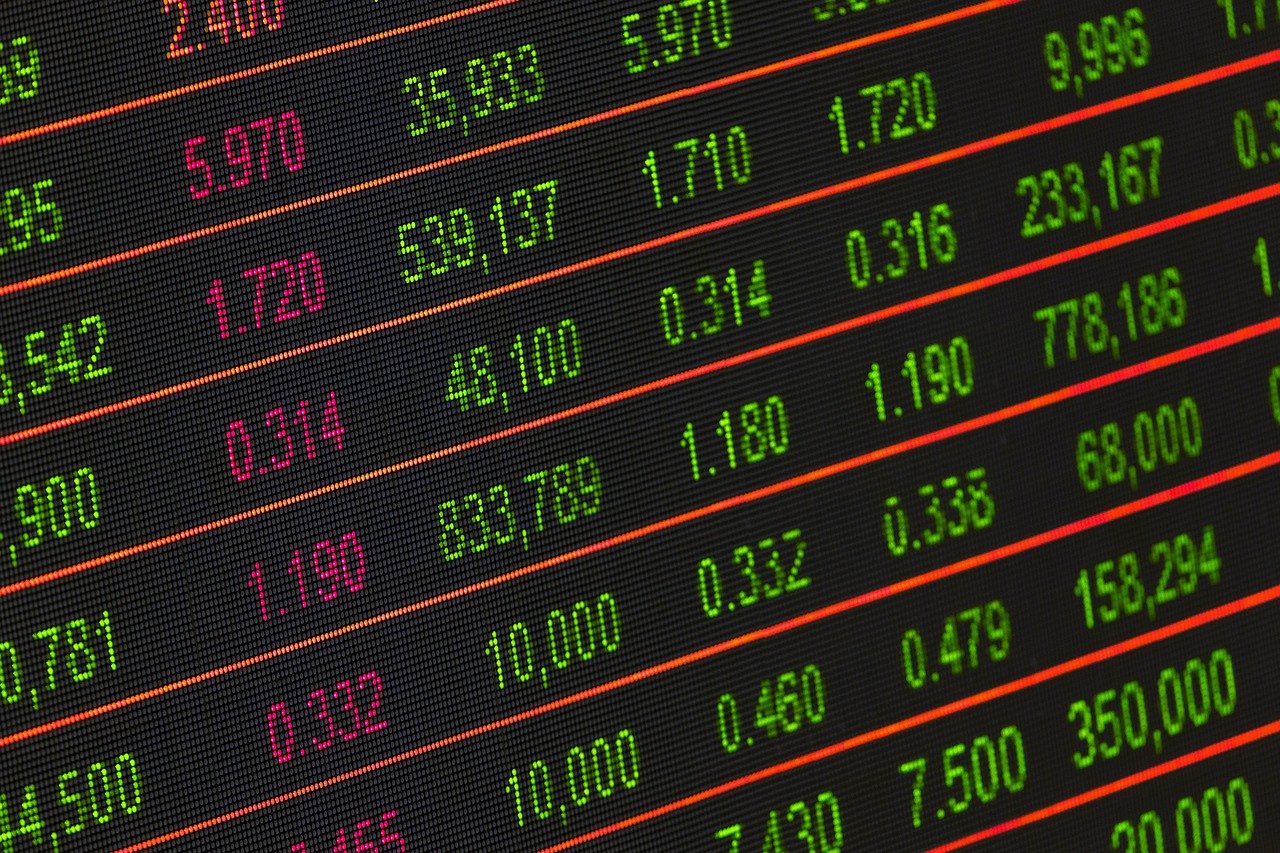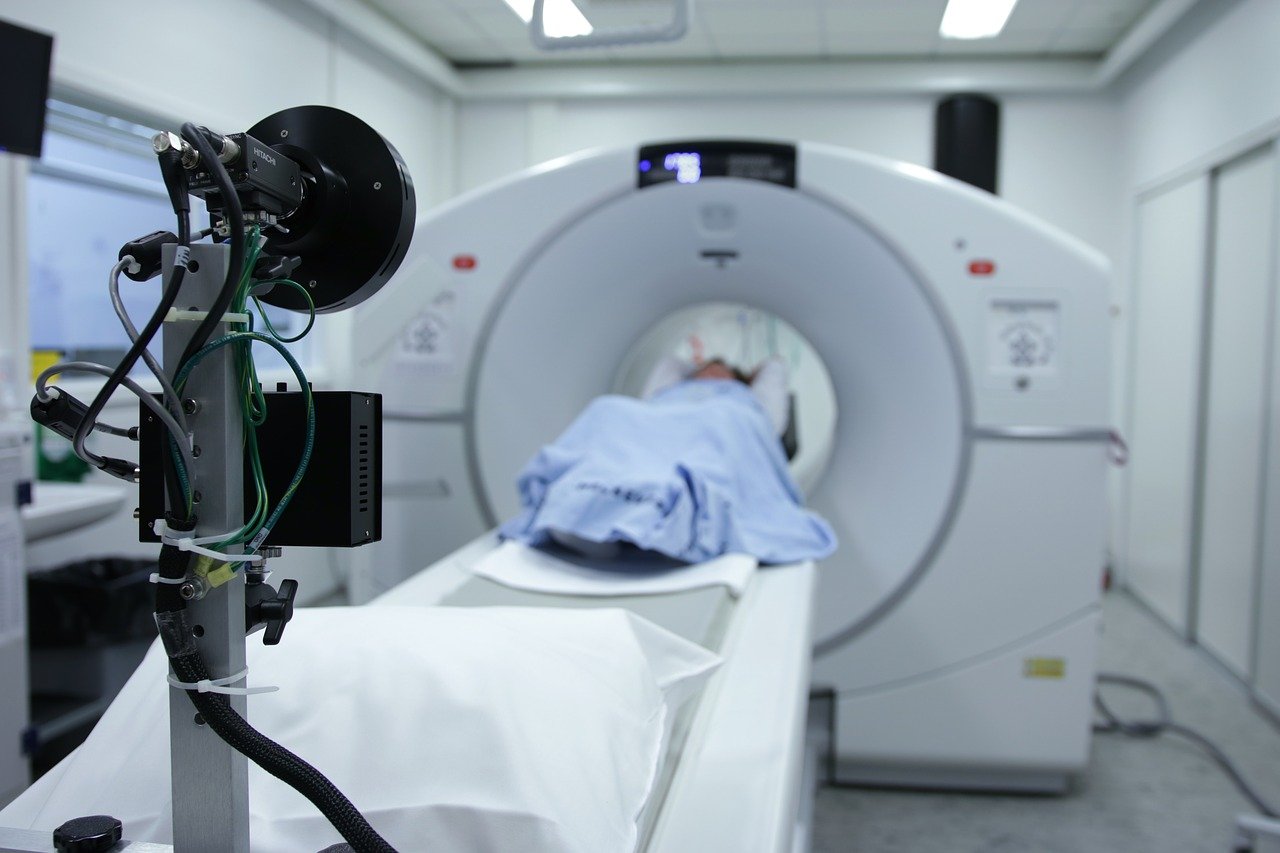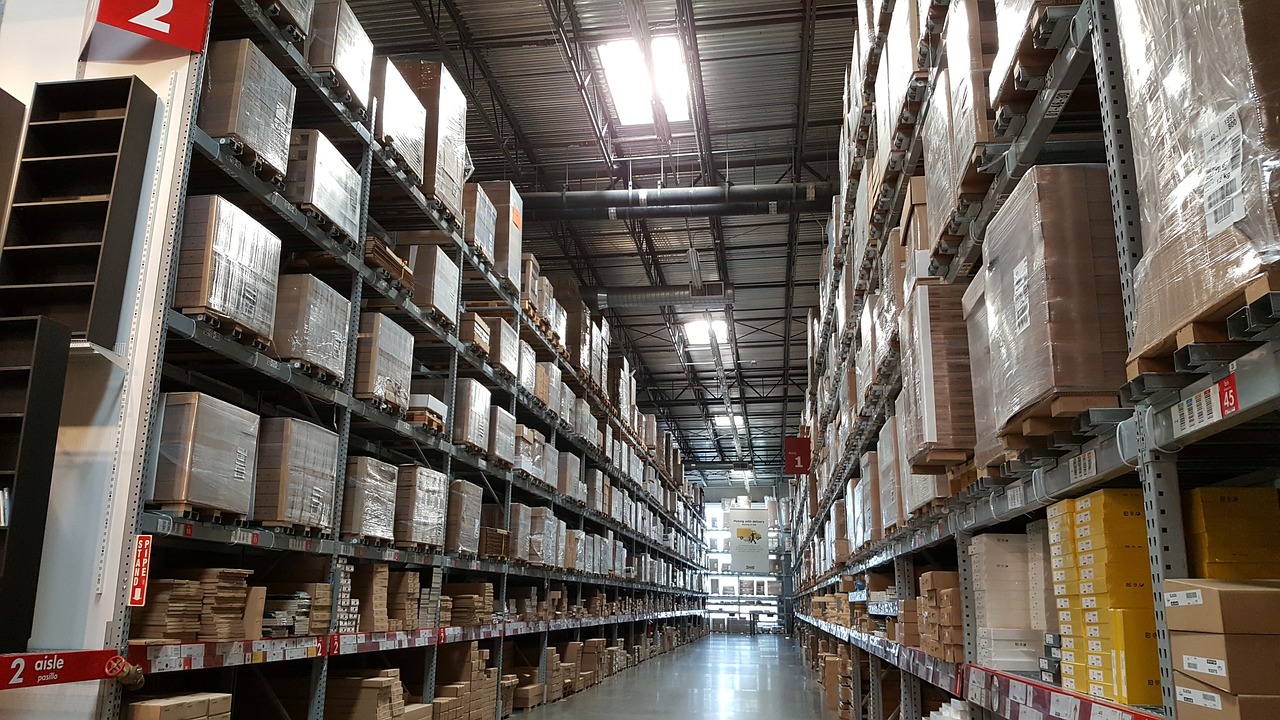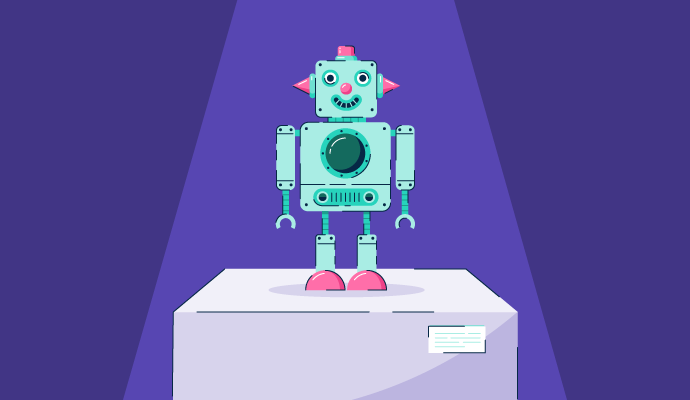Alors que les entreprises rationalisent leurs pratiques de gestion de bases de données, de plus en plus de sociétés se tournent vers le big data pour opérationnaliser leurs résultats commerciaux.
L'influence du big data et son impact gigantesque sur les industries commerciales et non commerciales aujourd'hui ont fait les gros titres. Alors que les leaders du marché cherchent à découvrir des comportements cachés, des tendances, des sentiments des utilisateurs et des opérations de basculement avec le big data, certaines entités restent floues sur leur corrélation avec les produits et services.
Les industries adoptent des logiciels de big data avec des fonctionnalités avancées d'analyse de données pour prévoir les capacités prédictives, atténuer les défauts de produits et améliorer les cycles de vie axés sur les produits. En fait, le magazine European Business a révélé une augmentation de 54% de l'investissement dans l'analyse de données et les insights clients en 2024.
Avant de vérifier votre prochaine alerte météo sur votre téléphone ou le total des pas effectués, découvrez plus de 36 exemples de big data qui révolutionnent le marché numérique aujourd'hui.
Exemples de big data dans les médias et le divertissement
L'industrie des médias et du divertissement générera un chiffre d'affaires estimé à 3,4 billions de dollars d'ici la fin de 2028. La numérisation a apporté de nouvelles façons de consommer du contenu, et une richesse de big data est générée chaque jour à partir de ces canaux.
 Comment le big data est utilisé dans les médias et le divertissement
Comment le big data est utilisé dans les médias et le divertissement
L'analyse du big data est cruciale pour générer plus de revenus et offrir des expériences personnalisées dans cette industrie axée sur le numérique. Voici quelques façons dont le big data est appliqué dans les médias et le divertissement aujourd'hui :
1. Personnalisation du contenu : Des entreprises comme Hulu et Netflix utilisent beaucoup de big data quotidiennement pour analyser les tendances des utilisateurs, le contenu personnalisé préféré, les tendances de consommation, et plus encore. En fait, Netflix et HuluPrime ont utilisé l'analyse prédictive des données pour créer leur série House of Cards, car les données ont validé qu'elle serait un succès auprès des consommateurs.
2. Monétisation numérique : Le big data révèle de nouvelles façons de monétiser le contenu numérique, créant de nouvelles sources de revenus pour les entreprises de médias et de divertissement. Avec l'essor des plateformes OTT et des services de streaming, de plus en plus de producteurs et d'investisseurs achètent des parts dans les médias numériques et créent des sources de revenus.
3. Analyse du big data : Grâce aux logiciels d'analyse du big data, les publicités sont ciblées de manière plus stratégique, aidant les entreprises à comprendre plus clairement la performance des publicités en fonction de certaines caractéristiques des consommateurs. Ce logiciel fait également un excellent travail de suivi du comportement des consommateurs sous forme de pépites de contenu.
4. Analyse du streaming vidéo : Les streamers et les joueurs exploitent le big data pour en savoir plus sur les intérêts de leurs audiences de jeux. Ils peuvent également capturer des données en temps réel via des enquêtes de rétroaction, l'analyse des sections de commentaires, les métriques de partage, et élaborer des stratégies pour leurs prochains streams de jeux en direct afin de correspondre à l'intention de recherche.
5. Succès cinématographique : Les logiciels de big data peuvent rassembler des données de box-office, des critiques et des données de collecte de billets, des marges bénéficiaires brutes, et des budgets de production pour prédire la probabilité de succès d'un film dans les cinémas.
6. Marketing sur les réseaux sociaux : La plupart des entreprises de médias se concentrent également sur l'engagement sur les réseaux sociaux pour analyser les réponses aux campagnes marketing et les réactions des gens à leurs nouvelles initiatives. Le big data qui circule via les outils de marketing sur les réseaux sociaux est utilisé pour ajuster les futures campagnes marketing.
Vous voulez en savoir plus sur Traitement et distribution des mégadonnées ? Découvrez les produits Traitement et distribution des grandes données.
Exemples de big data dans la finance
Le big data a fondamentalement changé l'industrie financière, en particulier le trading d'actions. L'introduction de modèles d'analyse quantitative a marqué un passage du trading manuel au trading soutenu par la technologie de l'IA générative.
 Les grandes institutions financières et les fonds spéculatifs ont été les premiers à adopter cette technologie. Désormais, les modèles quantitatifs sont devenus la norme.
Les grandes institutions financières et les fonds spéculatifs ont été les premiers à adopter cette technologie. Désormais, les modèles quantitatifs sont devenus la norme.
Ces modèles analysent le big data pour prédire les résultats de certains événements financiers, prendre des décisions précises d'entrée/sortie de transactions, minimiser les risques en utilisant l'apprentissage automatique, et même évaluer le sentiment du marché en utilisant l'analyse d'opinion.
Comment le big data est utilisé dans la finance
Voici les domaines où l'analyse du big data a été l'un des mécanismes de vérification et de détection d'erreurs les plus recherchés par les entreprises financières.
7. Détection de fraude par carte de crédit : Les cartes de crédit sont les plus vulnérables à l'exploitation frauduleuse car les données sont stockées dans plusieurs entrepôts de données. Les systèmes de big data utilisent des algorithmes d'apprentissage automatique pour surveiller et suivre de près l'activité des données en cas de glissement ou d'insertion de la carte par un utilisateur malveillant.
8. Contrôle des risques : L'analyse du big data est également utilisée pour atténuer et analyser les processus de contrôle des risques pour les organisations financières. Elle étudie les ensembles de données financières passées et les données de prévision historiques pour permettre aux analystes d'évaluer les risques et de construire des stratégies pour les comptes bancaires, les comptes de crédit, les comptes de prêt, etc.
9. Analyse des consommateurs : Le big data analyse également la stabilité financière des consommateurs, les dossiers bancaires et les investissements pour extraire des données pertinentes pour construire des conseils autour des couvertures d'assurance, des primes, des hypothèques numériques, etc.
10. Cybersécurité : Chaque jour, le big data est utilisé pour concevoir des piles technologiques de ransomware et anti-vol robustes pour prévenir les intrusions et les attaques par force brute. Les services de sécurité McAfee intègrent le big data avec leurs outils de cybersécurité pour empêcher la transmission de données sur le dark web et construire une infrastructure de sécurité des données robuste.
11. Big data et cloud hybride : Le déploiement de l'analyse du big data sur des programmes de cloud hybride comme Hadoop ou PostgreSQL permet aux entreprises de gérer en toute confiance de grands flux de pools de données. Comme le big data est principalement composé de données de flux de clics et de journaux, ces serveurs hybrides accueillent ces grands ensembles de données et réduisent la charge des serveurs de données physiques.
12. Conformité réglementaire : Les outils d'intelligence du big data et de l'apprentissage automatique comme PowerBI respectent toujours les lois étatiques, fédérales et locales de toute zone géographique. Ces outils ne violent jamais aucune politique stricte d'effacement ou de rétention des données imposée par l'entreprise.
13. Banque numérique : Le traitement de grands volumes de données financières avec une automatisation intelligente optimise les processus bancaires traditionnels et les services de transaction. De nombreux systèmes d'IA de ce type ont été intégrés avec des résumés de données de cartes de crédit, des comptes de prêt et des services bancaires en ligne pour la commodité du client.
14. Segmentation des clients : Comme les systèmes sont alimentés par des étiquetage de données et des fonctionnalités d'annotation de données, les algorithmes prédisent les tendances des clients et génèrent plusieurs enregistrements de clients qui sont catégorisés en fonction de la localisation, de l'âge, de la région, du salaire et d'autres paramètres.
Exemples de big data dans la santé
La capacité d'améliorer la qualité de vie, de fournir un traitement hyper-personnalisé aux patients et de découvrir des avancées médicales fait de l'industrie de la santé un candidat idéal pour le big data. En fait, l'industrie de la santé est l'un des plus grands récents adopteurs de l'analyse du big data.
 Comment le big data est utilisé dans la santé
Comment le big data est utilisé dans la santé
Dans le domaine de la santé, il ne s'agit pas d'augmenter les profits ou de trouver de nouvelles opportunités de produits ; il s'agit d'analyser et d'appliquer le big data de manière centrée sur le patient. Il existe déjà de nombreux exemples de cela aujourd'hui :
15. Prédire les événements de santé négatifs : Dans notre tour d'horizon des exemples d'analyse prédictive, nous avons discuté de la façon dont AlayaCare a analysé le big data pour prédire les événements de santé négatifs que les personnes âgées pourraient vivre à partir des soins à domicile. L'analyse a réduit les hospitalisations et les visites aux urgences de 73 % et 64 % chez les patients atteints de maladies chroniques.
16. Identifier les facteurs de risque : Les données historiques des fournisseurs de soins de santé peuvent être utilisées pour identifier et analyser certains facteurs de risque chez les patients. Cela est utile pour la détection précoce des maladies, permettant aux médecins et à leurs patients d'agir plus tôt.
17. Analyser les dossiers des patients : Le big data peut analyser des données hétérogènes de patients et peut prédire leur prochain cycle de traitement ou de consultation. L'administration hospitalière utilise des solutions de saisie de données infusées de capacités de big data pour créer des plannings de consultation futurs et prévoir les dépenses des patients.
18. Identifier les maladies : Le big data peut identifier les tendances des maladies en fonction de la démographie, de la géographie, des facteurs socio-économiques et d'autres facteurs. Les chercheurs médicaux et les étudiants peuvent déployer le logiciel pour soutenir leurs prédictions sur les tendances des maladies, les causes et les remèdes possibles.
19. Imagerie médicale : Le big data dans l'imagerie médicale implique le traitement de vastes ensembles de données provenant de l'imagerie par résonance magnétique (IRM), des rayons X ou d'autres scans d'organes. Les algorithmes analysent et détectent des motifs pour améliorer la précision, la rapidité et l'efficacité du diagnostic. Par exemple, les modèles d'IA identifient les anomalies dans de grands volumes d'images, aidant au diagnostic précoce et à la prévention des maladies.
20. Anatomie 3D : L'anatomie 3D utilise le big data pour construire des modèles numériques précis et détaillés de corps humains. Ces modèles compilent des données complexes et multi-sources, telles que les scans IRM et les rayons X, permettant des évaluations médicales personnalisées, la planification chirurgicale et la formation en temps réel pour les professionnels de la santé.
21. Nanoingénierie : Le big data est également utilisé pour développer des nanobots pour des immunothérapies contre le cancer sans douleur. Les données concernant de nouveaux antidotes, antibiotiques et médicaments peuvent être alimentées dans un système de big data pour rechercher, analyser et inventer de nouveaux médicaments pour les patients affectés.
Exemples de big data dans l'éducation
L'apprentissage moderne soutenu par la technologie s'éloigne de ce que nous "pensons" fonctionner pour se rapprocher de ce que nous "savons" fonctionner. Grâce au big data, les éducateurs sont capables de créer des modèles d'apprentissage plus personnalisés au lieu de s'appuyer sur des cadres standardisés, universels.
 Le big data aide les écoles à comprendre les besoins uniques des étudiants en mélangeant les environnements d'apprentissage traditionnels avec les environnements en ligne. Cela permet aux éducateurs de suivre les progrès de leurs étudiants et d'identifier les lacunes dans le processus d'apprentissage.
Le big data aide les écoles à comprendre les besoins uniques des étudiants en mélangeant les environnements d'apprentissage traditionnels avec les environnements en ligne. Cela permet aux éducateurs de suivre les progrès de leurs étudiants et d'identifier les lacunes dans le processus d'apprentissage.
En fait, le big data est déjà utilisé sur certains campus universitaires pour réduire les taux d'abandon en identifiant les facteurs de risque chez les étudiants qui prennent du retard dans leurs cours.
Comment le big data est utilisé dans l'éducation
22. Programmes personnalisés : Les collèges et universités peuvent promouvoir l'apprentissage expérientiel avec le big data. En analysant la fréquentation, les modèles d'apprentissage, les résultats des quiz, les devoirs et autres soumissions, ces algorithmes peuvent personnaliser le portail du système de gestion de l'apprentissage (LMS) selon les domaines d'apprentissage et d'amélioration obligatoires des candidats.
23. Curriculum numérique : Les systèmes de big data s'appuient sur le traitement du langage naturel (NLP) pour établir des corrélations et des comparaisons de données à partir des ensembles de données d'entrée. En améliorant leur précision de réponse et leurs flux de travail spécialisés d'apprentissage par renforcement avec retour humain, ces systèmes peuvent numériser les programmes pour favoriser un meilleur apprentissage tout au long du cycle académique.
24. Amélioration des résultats des étudiants : L'analyse et la notation des candidats via des systèmes de notation automatisés de big data conduisent également au bonheur et à la satisfaction des apprenants. Cela favorise l'engagement des étudiants et la satisfaction des étudiants et, à son tour, améliore les pratiques de notation dans les établissements d'enseignement.
25. Efficacité de l'enseignement : Avec les systèmes de big data, les enseignants peuvent accéder aux ensembles de données des étudiants de première main, résumer les ensembles de données et prédire la performance cohésive des étudiants pour ajuster leurs stratégies d'enseignement et travailler sur des résultats de données exploitables. Cela leur donne une transparence sur les résultats réels des évaluations et un aperçu des succès et des échecs.
26. Sécurité et confidentialité des données : L'analyse du big data est installée et maintenue conformément aux réglementations gouvernementales spéciales de l'organisation et aux lois sur la confidentialité des données.
Exemples de big data dans le commerce de détail
L'industrie du commerce de détail est devenue numérique, et les clients s'attendent à une expérience fluide de l'en ligne au physique. L'analyse du big data permet aux entreprises de détail de fournir une variété de services et de mieux comprendre leurs clients.

Comment le big data est utilisé dans le commerce de détail
Vous constaterez que certains des cas d'utilisation du big data dans le commerce de détail imitent de près ceux des médias et du divertissement. Mais dans le commerce de détail, c'est un peu plus axé sur le cycle de vie complet du client.
27. Recommandations de produits : Le big data est utilisé pour stocker le comportement de navigation des clients et le flux de clics pour faire des recommandations personnalisées de produits de commerce électronique. Par exemple, Amazon analyse les produits en fonction des recherches passées sur sa plateforme. En utilisant l'analyse prédictive, Amazon prédit avec précision ce que vous êtes susceptible d'acheter ensuite.
28. Prévision de la demande : La prévision de la demande est une autre application largement utilisée par les équipes de la chaîne d'approvisionnement pour comprendre les facteurs économiques, générer la demande et les scores d'approvisionnement agrégés et prédire les ventes. Les détaillants comme Walmart et Walgreens analysent régulièrement les changements météorologiques pour identifier les tendances de la demande de produits.
29. Contrôle de crise : Le big data est utile pour le contrôle de crise. Par exemple, lors de rappels de produits, le big data aide les détaillants à identifier qui a acheté le produit et leur permet de contacter en conséquence. Il initie des processus de récupération et de support client basés sur les images de produits et les commentaires et aide les marques à gérer l'insatisfaction.
30. Tarification dynamique : Les détaillants exploitent le big data pour ajuster les prix de manière dynamique en fonction de facteurs tels que la demande, les prix des concurrents et les habitudes d'achat des clients. Cette approche maximise les revenus, en particulier pendant les périodes de pointe, tout en restant compétitif sur un marché fluctuant.
31. Analyse des sentiments : Les détaillants analysent de vastes quantités de données de réseaux sociaux et de critiques de clients pour analyser les sentiments autour des produits ou des marques. Cela les aide à prendre des décisions basées sur les données, à ajuster les stratégies marketing ou les offres de produits pour s'aligner sur les opinions des consommateurs et améliorer la perception de la marque.
32. Détection de fraude : Le big data permet la détection de fraude en temps réel en analysant les motifs dans les données de transaction pour signaler les activités suspectes. Les détaillants comme eBay et Target utilisent des modèles d'apprentissage automatique pour identifier rapidement les anomalies, minimisant les pertes financières et renforçant la confiance des clients.
33. Optimisation de l'agencement des magasins : Les détaillants utilisent le big data sur les mouvements des clients et le comportement d'achat dans les magasins physiques. Les cartes thermiques et les données de trafic piétonnier révèlent les sections populaires, aidant les détaillants à positionner les produits à forte demande pour augmenter les ventes et améliorer l'expérience d'achat.
Exemples de big data dans la fabrication
La gestion de la chaîne d'approvisionnement et le big data vont de pair, c'est pourquoi la fabrication est l'une des principales industries qui bénéficient du big data. L'analyse du big data rend le suivi de la performance des sites de production plus efficace. L'analyse est également extrêmement utile pour le contrôle de la qualité, en particulier dans les projets de fabrication à grande échelle.

L'analyse du big data joue un rôle clé dans le suivi et la gestion des frais généraux et de la logistique sur plusieurs sites. Par exemple, être capable de mesurer avec précision le coût des tâches de l'atelier peut aider à réduire les coûts de main-d'œuvre.
Ensuite, il y a le logiciel d'analyse prédictive, qui utilise le big data provenant de capteurs attachés à l'équipement de fabrication. La détection précoce des dysfonctionnements de l'équipement peut sauver les sites de réparations coûteuses capables de paralyser la production.
Comment le big data est utilisé dans la fabrication
34. Systèmes de contrôle des stocks : Les systèmes de big data peuvent stocker des données d'inventaire pour optimiser les processus de chaîne d'approvisionnement et de logistique. Savoir à l'avance quel matériau brut a été réapprovisionné ou combien de déchets d'usine sont produits avec ces systèmes peut permettre aux équipes de vérifier minutieusement les nomenclatures (BOM), la valeur des bons de commande, le coût moyen et les configurations de production pour éviter toute erreur.
35. Dropshipping et camionnage : Ces systèmes ajoutent des marquages virtuels pour chaque étagère et rangée de l'entrepôt, effectuent des évaluations des risques, surveillent l'approvisionnement et inspectent l'usine de vos marchandises. Ils automatisent également les itinéraires de camionnage et élaborent des stratégies de suivi GPS intelligentes pour produire plus de rendement avec moins de main-d'œuvre.
36. Logistique : Les systèmes de big data peuvent générer une synchronisation entre les équipes de fabrication et les équipes de chaîne d'approvisionnement pour ajuster les lots d'inventaire en fonction de la demande exacte et régulariser les délais de livraison. Il optimise les flux de travail logistiques et de production afin que la pression ne soit pas trop forte sur les ouvriers d'usine et les assembleurs.
Allez grand ou rentrez chez vous
Le marché mondial du big data devrait croître pour atteindre 103 milliards de dollars américains d'ici 2027. Avec les récentes nouvelles du retour de la fusée Artemis à sa rampe de lancement du Kennedy Space Center et l'inauguration par Elon Musk du premier Robotaxi Tesla, le ciel est la limite pour la consommation de big data.
Non seulement les grandes entreprises, mais aussi les entreprises de toutes tailles sont sur le qui-vive pour investir dans des prototypes d'IA et élaborer des stratégies pour acquérir une infrastructure d'IA mature dans un avenir prévisible. Leur principal moteur est d'éliminer les blocages créatifs sur le lieu de travail, de prévoir de nouvelles tendances et mises à jour algorithmiques, et de mettre à niveau les produits et services pour exploiter de nouvelles opportunités de marché. Inutile de dire que le big data le rend possible.
Apprenez comment vous pouvez construire des tableaux de bord intelligents et axés sur les données pour visualiser les tendances passées du big data et les rapports des consommateurs avec les 10 meilleurs logiciels de tableau de bord gratuits.
Cet article a été publié à l'origine en 2019 et a été mis à jour avec de nouvelles informations.

Devin Pickell
Devin is a former senior content specialist at G2. Prior to G2, he helped scale early-stage startups out of Chicago's booming tech scene. Outside of work, he enjoys watching his beloved Cubs, playing baseball, and gaming. (he/him/his)
